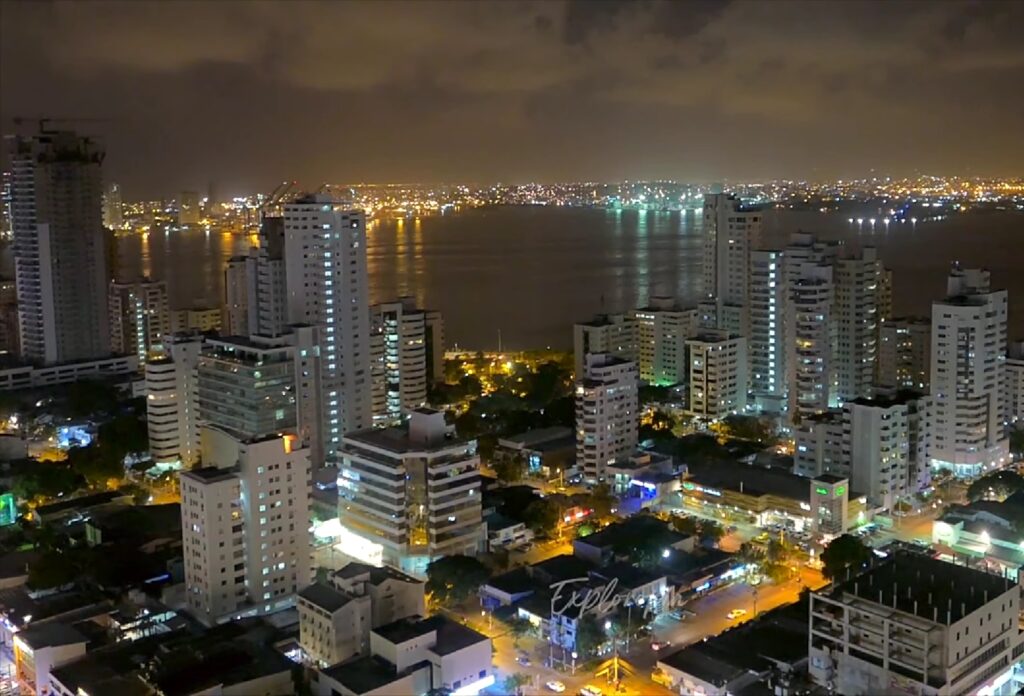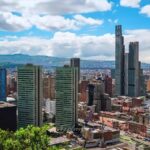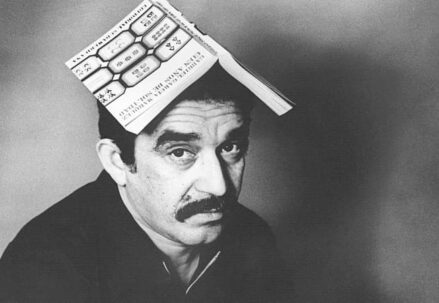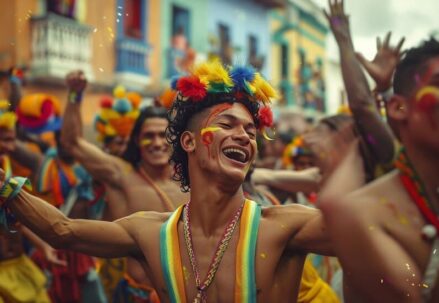Colombia boasts expansive urban territories, notably distinguished by its prominent cities such as Bogotá, Medellín, and Cali, which stand as the foremost capitals. These urban centers serve as focal points for the nation’s dense population, thriving industries, vibrant commerce, and a plethora of tourism offerings, making them pivotal hubs of activity and cultural exchange.
However, Colombia’s urban landscape extends far beyond these well-known metropolises. Can you name other significant cities in Colombia? Embark with us on a journey of exploration through a series of inquiries, uncovering the diverse tapestry of major cities that define this captivating country.
Exploring Bogotá: Colombia’s Vibrant Capital
Bogotá, the bustling capital of Colombia, is the largest city in the country. Boasting a population close to 8 million inhabitants, it rightfully earns its status as a major city. Perched high in the central highlands of the Andean region, the city is surrounded by vast, fertile lands dedicated to dairy farming and the cultivation and export of vibrant flowers, contributing significantly to the country’s economy.
A bustling metropolis, Bogotá encompasses much more than just political and administrative functions—it is the beating heart of Colombia’s economic, industrial, artistic, and cultural scenes. Offering everything from awe-inspiring contemporary architecture to meticulously preserved colonial buildings, the city provides a breathtaking fusion of the old and the new, a testament to its diverse and multicultural heritage.
Bogotá is also a hotbed for sports activities and a popular tourist destination, drawing in globetrotters with its charm and vibrancy. Whether you’re an explorer set to navigate the cobblestone streets of La Candelaria or an avid socialite ready to dive into Zona T’s bustling nightlife, Bogotá has something to offer to every visitor.
Thinking of the best time to visit Bogotá? Take a look at these helpful tips:
- Climate: Bogotá has a cool mountain climate, with temperatures averaging 15°C (59°F). While the city can be visited year-round, the drier months from December to March and July to August are arguably the most comfortable for sightseeing;
- Festivals: If your objective is to immerse yourself in local culture, consider scheduling your visit to coincide with Bogotá’s major festivals. The Iberoamerican Theater Festival in March/April and the Bogotá Film Festival in October are notable events;
- Off-Peak Season: For budget-conscious travelers, consider traveling during the off-peak season. While rainfall is more frequent, you’ll encounter fewer crowds and lower prices.
Don’t forget to pack your sweaters and rain jackets, as unexpected showers are a common feature in this high-altitude city. Regardless of when you go, a trip to Bogotá promises a memorable Colombian experience.
Medellin: The City of Eternal Spring
Among the major cities of Colombia, the title for the second most populous goes to Medellín, positioned as the capital of the Antioquia department. Nestled within the central cordillera of the Andes, Medellín serves as an exceptional gateway to numerous outdoor activities.
Known for its pursuits such as hiking, zip-lining, and horse riding, you’ll find that the city perfectly balances urban sophistication with natural beauty. Surrounded by verdant mountains and close proximity to the agriculture and mining districts, Medellín’s strategic location is a testament to its significance in the Colombian landscape.
Medellín has marked its presence as Colombia’s textile and clothing powerhouse, propelling it among the country’s major urban centers. But the city has more to offer than just industry. With its warm, spring-like climate throughout the year, Medellín is fondly referred to as the “City of Eternal Spring”. This beautiful weather invites visitors to explore the city’s numerous parks, botanical gardens, and outdoor cafes.
Here’s what you need to know about visiting Medellín:
- Climate: You can visit Medellín any time of the year thanks to its consistent temperatures, which hover around 22°C (72°F). However, do note that April-May and October-November are the city’s rainiest months;
- Festivals: For culture enthusiasts, August is an ideal time to visit. The city hosts the storied Feria de Las Flores (Flower Festival), featuring flower parades, concerts, and cultural events;
- Transport: Medellín boasts Latin America’s only metro system, making it easy for travelers to explore the city. You might also want to experience riding in the city’s famous cable cars;
- Safety: Medellín has undergone significant transformation over the years, making it safer for tourists. Nevertheless, like any other city, it’s important for travelers to remain cautious and aware of their surroundings.
The delightful weather, coupled with the city’s modern amenities and cultural attractions, makes Medellín a must-visit destination in Colombia.
Cali: The Salsa Capital of the World
Cali, the capital of Valle del Cauca, stands as the third most populated city in Colombia, housing over 2.1 million residents. The city is strategically located along the fertile plains of the Cauca River Valley, interspersed with vast sugar cane plantations that contribute significantly to the city’s economy.
While Cali has historic roots dating back to the 16th century, it experienced a surge in urban development and economic growth only in the mid-twentieth century. This development propelled Cali into the league of major cities in Colombia, where it now proudly stands.
Cali isn’t just about urban growth and sugarcane cultivation. Known as the “World Capital of Salsa”, the city is deeply rooted in music and dance. Its vibrant nightlife and the infectious rhythm of salsa music that permeates through its streets give Cali a unique and boisterous energy that is hard to find elsewhere.
Planning on visiting Cali? Here’s what you need to know:
- Climate: Cali has a tropical savanna climate, with average temperatures oscillating between 19°C (66°F) and 30°C (86°F). Rainfall is experienced throughout the year, with drier periods from July to September;
- Festivals: Cali is renowned for the Cali Fair held in December, where you can witness live music, parades, and salsa champions from around the globe. It also hosts the World Salsa Festival every August;
- Cuisine: Don’t miss out on tasting traditional Valle del Cauca cuisine, including Sancocho de Gallina (chicken stew) and Pandebono (cheese bread);
- Attractions: Visit the Cali Zoo, considered one of the best in Latin America. Make sure to explore the historic neighborhood of San Antonio and the beautiful Sebastian de Belalcazar statue.
Cali’s blend of urban development, cultural richness, and vibrant nightlife makes it a must-visit destination when exploring Colombia’s major cities.
Barranquilla: The Golden Gate of Colombia
Barranquilla, the capital of the Atlántico department, is the fourth-largest city in Colombia in terms of population. Known as Colombia’s “Golden Gate”, Barranquilla blends its industrial prosperity with an exuberant cultural landscape.
Barranquilla is renowned worldwide for its grand Carnival, a four-day-long celebration that explodes with colors, music, dance, and cultural heritage. So cherished is this event that UNESCO has deemed it an Oral and Intangible Cultural Heritage of Humanity, only securing Barranquilla’s reputation as a vibrant cultural hub.
Beyond its energetic festivities, Barranquilla’s charm is further amplified by its architectural splendor, natural landscapes, and the warm, joyous spirit of its people. The city’s strategic location on the Magdalena River lends the city its picturesque landscapes, offering captivating sunset views over the river.
Considering a trip to Barranquilla? Keep these tips in mind:
- Climate: Barranquilla experiences a tropical monsoon climate, with average temperatures around 28°C (82°F). The city sees rain primarily from April to June and from August to November;
- Festivals: Time your visit for the Barranquilla Carnival, typically held in February or March. Be prepared for a visual spectacle filled with parades, music, and dance!;
- Cuisine: Be sure to savor the region’s traditional coastal delicacies – try Bandeja de Mariscos, a seafood platter, or the sweet treat of Cocadas;
- Attractions: Visit the Museo del Caribe, the city’s primary cultural center, and don’t miss the romantic district of El Prado.
Barranquilla’s rich cultural flair, coupled with its warm hospitality, makes it one of Colombia’s must-see cities.
Cartagena: A City Encased in History
The city of Cartagena, officially known as Cartagena de Indias, is the capital of the Bolívar department and ranks fifth in terms of population size in Colombia. Found on the Caribbean coastline, it beautifully merges colonial heritage with tropical allure, winning the hearts of travelers from the world over.
One of its primary distinctive features is the Historical Center, known as the Walled City. Back in the 16th century, the city was enclosed within fortress walls to protect it from pirates and invaders. Today, this UNESCO World Heritage Site stands as a time capsule, preserving Cartagena’s vibrant past within its cobbled streets, colorful colonial architecture, and enchanting plazas.

Beyond the walls, Cartagena’s charismatic appeal continues in the form of sun-kissed beaches, offering a tropical retreat that complements its rich historical significance.
Are you planning a visit to Cartagena? Here are some useful insights:
- Climate: Cartagena experiences a tropical climate, with temperatures usually between 24°C (75°F) and 31°C (88°F). The city can be visited all year round, however, remember to stay hydrated and protect yourself from the sun;
- Historical Tour: Make sure to explore the Walled City, the San Felipe Castle, and the Palace of the Inquisition. They are all standout pieces of the city’s rich history;
- Cuisine: Indulge in delicious local dishes such as Ceviche, Arepa de Huevo (fried egg-stuffed corn cakes), and coconut rice;
- Beaches: Visit the beautiful beaches of Bocagrande, Marbella, and La Boquilla. For stunning coral reefs, consider a day trip to the nearby Rosario Islands.
Cartagena’s unique blend of history, culture, and Caribbean charm makes it an unforgettable destination among Colombia’s major cities.
Cúcuta: Gateway to the Andes and Beyond
Cúcuta, formally known as San José de Cúcuta, is the capital city of the Norte de Santander department in Colombia. As a major hub that connects Colombia with Venezuela, Cúcuta is a city of strategic importance, making it a bustling center of trade and commerce.
The city is home to numerous landmarks that point to its rich history. One of the city’s prominent landmarks is the “Monumento a Cristo Rey” or the Christ the King monument which stands tall in the city, overlooking the picturesque landscapes, offering sweeping views of the extensive cityscape.
Another notable landmark is the Column of Padilla, an obelisk erected in honor of Admiral Padilla, a famed naval leader who played a crucial role in the independence of Colombia.
Are you thinking of visiting Cúcuta? Take note of these key points:
- Climate: Cúcuta enjoys a tropical rainforest climate, with average temperatures around 28°C (82°F). It’s pleasant to visit throughout the year;
- Landmarks: Apart from the Christ the King monument and the Padilla Column, other points of interest include the Julio Pérez Ferrero Library and the House of the Bagatela;
- Natural Beauty: Don’t miss the opportunity to visit the beautiful Laguna de los Micos, a lake known for its high biodiversity;
- Cuisine: Be sure to try the typical dishes of the region, including Sancocho de Gallina and Mute Santandereano.
Cúcuta’s unique blend of cultural landmarks, strategic geographical location, and inviting climate makes it a captivating stop in any Colombian tour.
Pereira: The Heart of Colombia’s Coffee Region
Pereira, officially known as the Capital City of the Risaralda Department, is the sixth largest city in Colombia by population size. Nestled in the foothills of the Andes, in a region known as the “coffee belt” of the country, Pereira is a gateway to the beauty and bounty of the Colombian coffee region.
The city’s strategic location gives it a substantial advantage, making it a key center for business, trade, and culture. It offers a blend of urban development, agricultural richness, and cultural diversity, anchored by its friendly and welcoming locals.
Pereira is surrounded by lush landscapes, rivers, and thermal springs, making it a destination that nature enthusiasts will love. Its coffee farm tours are particularly popular, giving visitors a chance to understand the journey of the coffee bean from farm to cup.
Here’s what you need to know if you’re considering a visit to Pereira:
- Climate: Pereira has a tropical rainforest climate, with average annual temperatures around 22°C (72°F);
- Coffee Tours: Don’t miss the opportunity to tour coffee plantations and learn the process of coffee-making. Some tours even offer coffee tasting sessions;
- Natural Beauty: Visit the nearby Los Nevados Natural Park and Otun Quimbaya Flora and Fauna Sanctuary for nature exploration;
- Cuisine: Enjoy the local dish “Bandeja Paisa” that is often served with a cup of the world-famous local coffee;
- Sightseeing: The city’s Cathedral and Plaza de Bolivar are key landmarks to explore.
Pereira’s blend of urban convenience, agricultural heritage, and natural beauty presents a unique and fascinating Colombian experience.
Conclusion
In conclusion, Colombia’s urban fabric is richly woven with a diverse array of major cities, each contributing its unique charm, economic vitality, and cultural significance to the nation’s dynamic tapestry. From the bustling capitals of Bogotá, Medellín, and Cali to the lesser-known yet equally vibrant urban centers, Colombia’s cities showcase the country’s multifaceted identity and offer a wealth of opportunities for exploration and discovery. Whether you’re drawn to the bustling metropolis or the hidden gems waiting to be uncovered, Colombia’s cities beckon with their stories, experiences, and endless possibilities.





